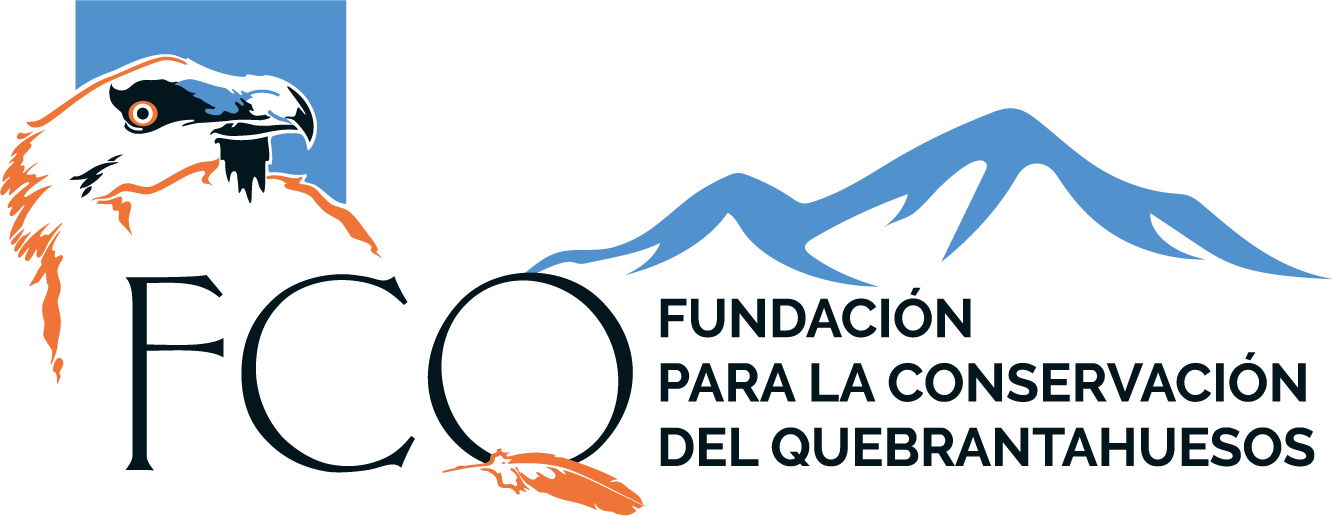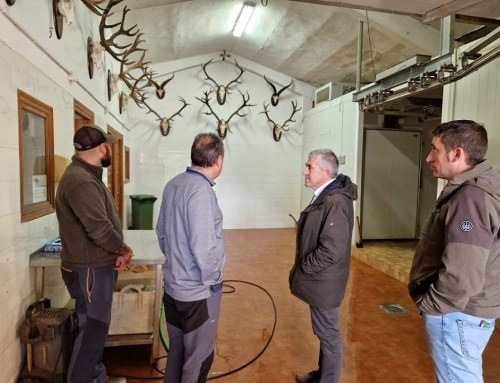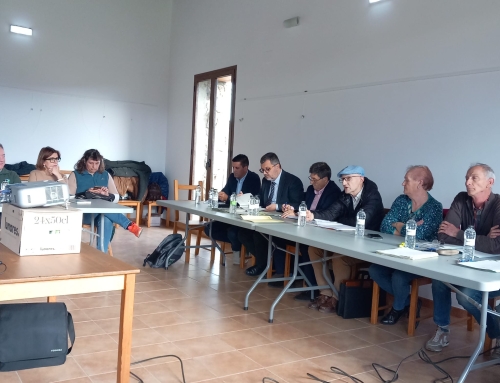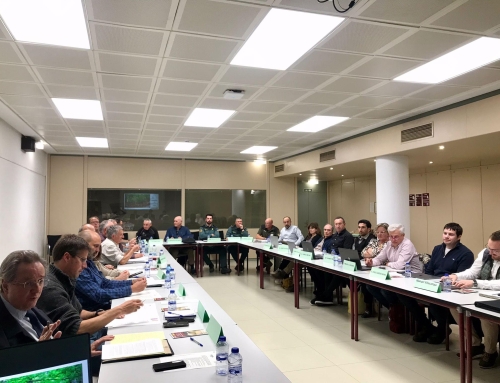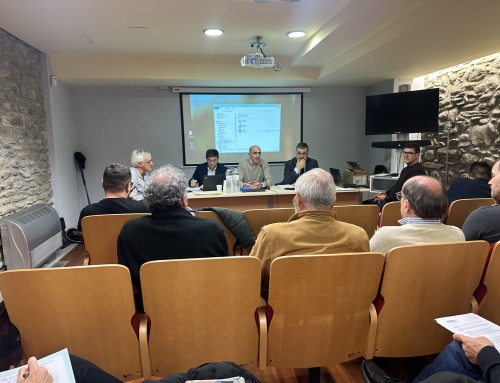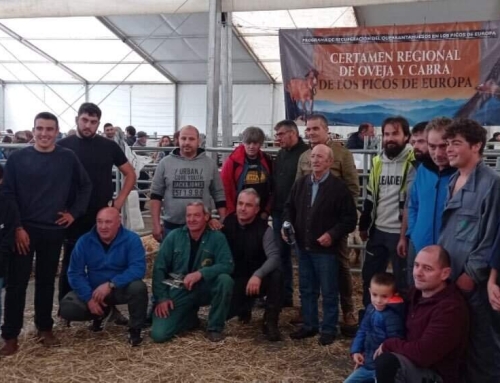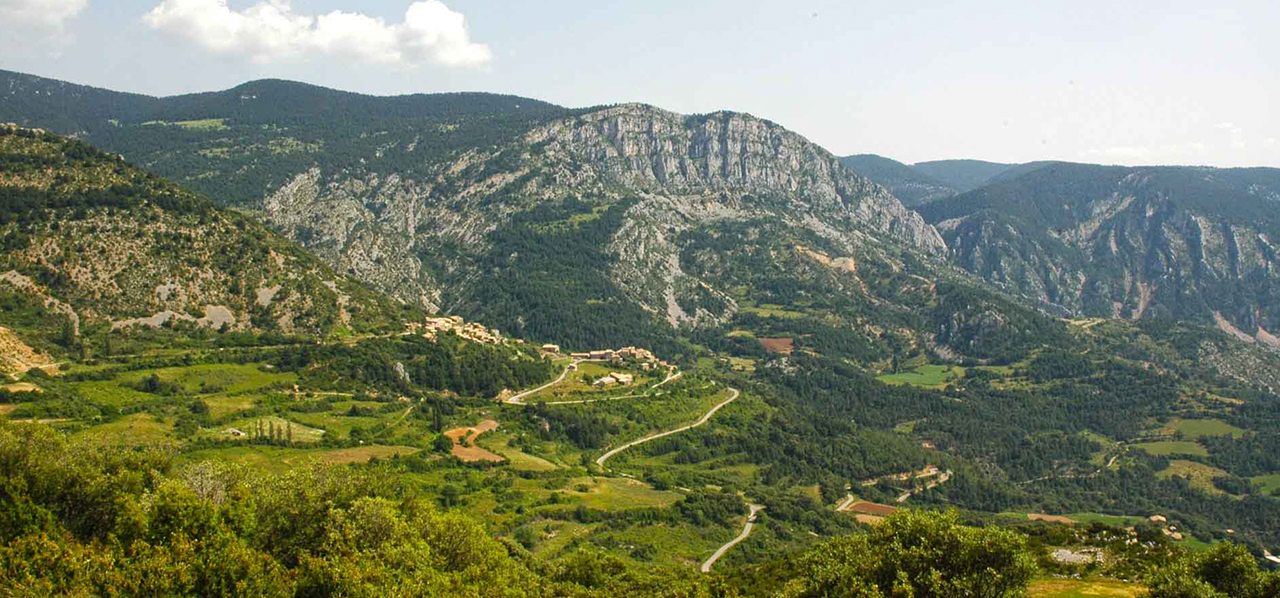
Two million euros to prevent large fires with forest management in Aínsa and Lérida.
The Bearded Vulture Conservation Foundation is one of the five organizations of Bio For Piri, Forest Bioeconomy in the Pyrenees, led by Fundació Catalunya La Pedrera. Bio For Piri, Forest Bioeconomy in the Pyrenees, has recently started and, for about two years, will deploy a series of actions to reduce the threat of a large forest fire in two pre-Pyrenean geographical areas: Alinyà, in Lérida and Aínsa-Sobrarbe, in Huesca. The project’s mission is to promote forest bioeconomy through forest management as a solution to two of the great challenges of the area: forest fires and the demographic challenge, led by the Fundació Catalunya La Pedrera and in coordination with five leading organizations in their fields, including the Foundation for the Conservation of the Bearded Vulture.
Bio For Piri has obtained the second best position in the ranking of all the proposals submitted in the call for grants for the “Conservation and restoration of ecosystems and their biodiversity” of the Biodiversity Foundation, and has received a total of 1,992,473.22 euros, which denotes that the project is a clear transformative commitment to the promotion of the bioeconomy linked to the field of forests and the contribution to the ecological transition.
The Biodiversity Foundation, which awards these grants within the framework of the Recovery, Transformation and Resilience Plan (PRTR), financed by European NextGenerationEU funds, has offered an endowment of 77 million euros to be distributed among the 56 projects selected in Spain.
The Pre-Pyrenees is an area of great natural beauty with a diverse landscape of rolling hills, fertile valleys, winding rivers and dense forests. It acts as a transition between the plains and the mountains, and is the habitat of a great diversity of flora and fauna, and of villages and rural communities that live from agriculture, livestock farming and tourism. Its forests, besides being one of its main economic assets, represent a valuable natural heritage of great ecological importance for natural conservation on a European scale.
In recent years, the abandonment and precariousness of the primary sector have led to the loss of the agroforestry mosaic which, added to the current climatic context, has increased the risk of suffering a major forest fire (those that burn more than 500 hectares and whose behavior is beyond the capacity of extinction) in the Pyrenees. Due to the size and impact of this potential fire -it could burn from Navarra to Girona- we can affirm that this is one of the most sensitive and vulnerable areas to this threat in the Iberian Peninsula.
Ecosystem balance, fundamental to the Bio For Piri project.
SIX REFERENCE ENTITIES
The Bio For Piri project converts these forest prevention and management tasks into opportunities for rural development and conservation of the natural heritage through the forest bioeconomy. In this sense, the project focuses on three main lines of work:
- Forest fire prevention and forest management
- Boosting the forest bioeconomy
- Knowledge transfer
The project is the result of the collaboration of six leading organizations in their fields. At the forefront is the Catalunya La Pedrera Foundation as the coordinating entity, accompanied by five other partners: the Centre de Ciència i Tecnologia Forestal de Catalunya (CTFC); the Foundation for the Conservation of the Bearded Vulture; the Company & Climate Foundation; the Pau Costa Foundation; and the Integra Pirineus Foundation.
The results of the project actions will have an impact on two scales: regional and local. On the one hand, from the regional scale, plans and criteria for the prevention of large forest fires applicable to the whole Pyrenees area (massif scale) will be defined. On the local scale, Alinyà, Aínsa-Sobrarbe, its surroundings and inhabitants will benefit from the implementation of actions with a direct impact on their territory, ranging from the generation of jobs to the conservation of biodiversity in the area.
Resources:
- A stable brigade will be created to carry out forest management tasks in Alinyà (4 job insertion positions and 1 person in charge of the brigade).
- Two jobs will be created, including one for a woman, and the six existing jobs will be consolidated tostrengthen grazing and extensive livestock farming in Alinyà.
- 16 people with European chainsaw license will be trained to be hired in forestry brigades. Priority will be given to women and people from Alinyà or neighboring villages.
- Sustainable forest management actions will be carried out in 80 ha in Alinyà, considered high priority areas by the Fire Prevention Plan, and 24 ha in Aínsa-Sobrarbe.
- In the surroundings of Alinyà, a new pasture area of 40 ha will be created and fountains and water points will be recovered.
- In the Sobrarbe region, 19 hectares of pasture land will be extended for extensive sheep farming managed by young farmers.
- Asustainable housing prototype will be builtwith local wood.
- There will be 12 volunteer days linked to the sustainable management of forests, 6 in Alinyà and 6 in Aínsa-Sobrarbe, and one day of Bioblitz in each area.
- A new ecotourism offerwill be created with five new interpretative itinerariesin Aínsa .
- 8investment proposals will be generatedfor companies linked to the management of local forests in Alinyà and Aínsa-Sobrarbe.
- There will be 2 training courses in forestry work inAlt Urgell and 3 training seminars in sustainable forest management, 2 in Alinyà and 1 in Aínsa-Sobrarbe.
Bio For Piri is supported by the Biodiversity Foundation of the Ministry for Ecological Transition and the Demographic Challenge (MITECO) within the framework of the Recovery, Transformation and Resilience Plan (PRTR), financed by the European Union – NextGenerationEU.
Source:
